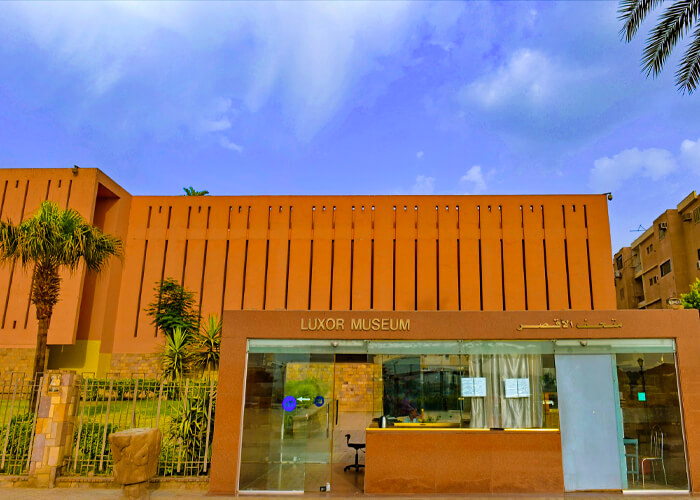The location of the Luxor Museum:
The Luxor Museum is a must-see attraction. It is on the East Bank of the Nile in Luxor, between the Karnak Temple to the north and the Luxor Temple to the south.
The museum’s grounds are 55 meters long and 29 meters wide, and its front was built to face the Nile.
The Description :
The museum first opened to the public in 1975. At first, it wasn’t as good as the Museum of Egyptian Antiquities in Cairo. but over time, the Egyptian Supreme Council of Antiquities started adding more artifacts and displays to the Luxor Museum to try to attract more people to go there.
The museum garden contains many interesting exhibits that come together to create a large open-air museum. In the garden of the Luxor Museum, there are many sculptures from the Pharaonic era, especially from the era of the New Kingdom.
After viewing the exhibits in the park, people pass through a large glass door to enter the museum. The main hall of the museum has two floors. Connected by spiral staircases that give it a more lively feel than other static old museums. Thanks to these circular corridors, which do not obstruct the road, people can move around the museum without any problems.
On the first floor of the Luxor Museum is a large collection of Egyptian sculptures, including a statue of the crocodile god Sobek that was taken from his temple in Kom Ombo. The walls of the once majestic temple of Amenhotep IV can still be seen in Luxor.
On the first floor of the Luxor Museum, you can see colorful sarcophagi. On the left side of the museum, some fine carvings were added in 1989.
The exhibits at the Luxor Museum cover more than 4,000 years of history. From antiquity to the Islamic era. The museum has a huge collection of antiques, but only a few have been selected for display.
The most interesting things in the Luxor museum are:
The mud-brick walls of the Temple of Akhenaton (1347 -1364 BC).
A bronze statue shows Thutmose III, who was the sixth pharaoh of the 18th Dynasty. The statue is 90 cm long and made from a special type of granite. There aren’t many pharos as tall as Thutmose.
A statue of Amenhotep III was taken to Cairo from Madinat Habu, which is on the west bank of Luxor. Ptolemaic Egypt looked up to Amenhotep III (1365–1403) and treated him like a god during his lifetime. In the Luxor Museum, there is a statue of him that is 130 cm tall. It is made of one piece of black granite.
The “Oshabty” statue (hydrographic slang for “answerer”). The person who built the tomb gave him the job of taking care of the land after death. This figure is made of colored wood from the end of the 18th Dynasty because it is so old. The 23-centimeter-long statue shows a man holding an ax and a sack of seeds in his right and left hands, respectively.
A cartoon mummy on the cover of a book was found in a tomb on the western bank of Luxor. The cover of the sleeve is 175 cm long and 42 cm wide. The dynasties 21 through 24 are part of the third intermediate stage of this time period. It was made with fleas and plaster. The mummy’s outer layer was called cartonnage, and it was covered with designs for funerals.
Some of the things in the Valley of the Kings on the west bank that came from the tomb of Tut Ankh Amun.


